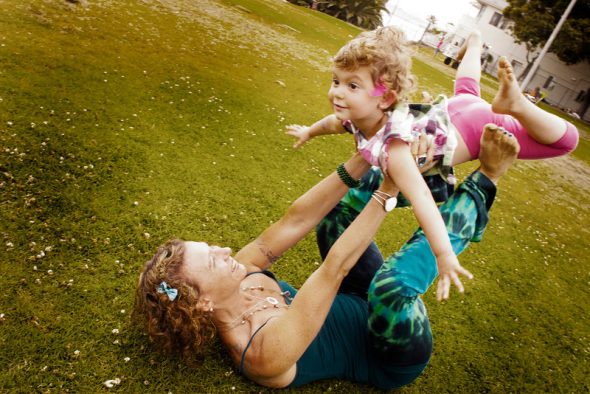Children’s Yoga Specialty Certificate
Offered as an Immersion Program or in California and Nevada in a 4-5 month course structure. Our RCYT Training is designed to impart knowledge and confidence in teaching yoga to children.
For full program details, training dates and locations, please follow the click the following link to lead trainer, Rebecca Taylor’s, Children’s Yoga Teacher Training website at: https://www.childrensyogatraining.com
Pre-requisite: Completion of any 200 level yoga training program.
We are honored to host some of the most respected and influential teachers as esteemed faculty and guest teachers.
To complete your RCYT with Cloud Nine Yoga:
[su_list icon=”icon: check”]
- Graduate from a 200-hr RYT Program
- Take our entire RCYT Yoga Program (offered at several locations each year or ONLINE)
- Complete an 18 hour Practicum
[/su_list]
RCYT HOUR BREAKDOWN
[su_list icon=”icon: angle-right”]
- 12 hours (contact) +++ General Background in the Specialty Area
- 20 hours (contact) +++ Techniques, Training and Practice
- 15 hours (contact) +++ Teaching Methodology
- 10 hours (contact) +++ Anatomy and Physiology
- 12 hours (contact) +++ Yoga Philosophy, Lifestyle and Ethics for Yoga Teachers
- 18 hours (contact) +++ Practicum
- 8 hours +++ Elective Hours / Self Study
95 Total Hours (87 contact hours)
[/su_list]
TOPICS
General Background
Childhood Development:
[su_list icon=”icon: angle-right”]
- Class Groupings
- Developmental Stages
- Gender differences and similarities
- Energy level differences
- School types
- Learning styles
- Class management
- Relationship with Parents/Guardians
- Relationship with Studio or School
- Discipline in class
[/su_list]
Techniques, Training and Practice
Yoga with Children:
[su_list icon=”icon: angle-right”]
- Goal/purpose of class (yours and theirs)
- Settings goals and objectives for class
- Working from With-In (vs. with-out)
- Recognizing energy levels (yours and theirs)
- What does a yoga class look like
- What do yoga students look like
- Choosing to be there (student and teacher)
- Studio or school setting or homeschool setting
- Class size / Teacher to student ratio
- Private lessons
- Democratic classes
- Safe environment
- Tuning in / Grounding (for teacher and students)
- Asana (play)
- Meditation on the mat
- Meditation in movement
- Experiencing Prana and creating Pranayama practice
- Mantra and Chanting
- Mudras
- Games
- Stories
- Creating practice using story
- Relaxation
- Creating Lesson Plans / Class Syllabus
- Directing energy
- Use of props (books, toys)
- When Fear Arises (Name it, Breathe through it, Own it)
- Help! (Returning to center and unfolding gracefully)
[/su_list]
Teaching Methodology
Teacher as a Guide:
[su_list icon=”icon: angle-right”]
- Class Set up and break down
- Setting the space energetically
- Defining and delegating responsibilities
- Creating Boundaries (students and teacher)
- Creating a Safe Place
- Teaching the Yamas and Niyamas
- Communication with Students
- Deep listening
- The “Troubled” Child
- Children with Special Needs
[/su_list]
Anatomy and Physiology
The Body:
[su_list icon=”icon: angle-right”]
- Physical structure
- Developmental changes
- Emotional development and how it develops and evolves throughout childhood
- Energy System
- Use of props to enhance practice (how and when)
- Intuition (recognizing and honoring)
[/su_list]
Philosophy, Lifestyle, and Ethics
Standing in Integrity:
[su_list icon=”icon: angle-right”]
- Let it Start with You
- The Whole Child
- Parents and “aunties” and “uncles”
- Setting intensions (for class and beyond)
- Modeling the Yamas and Niyamas
- Ethical behavior and languaging
- Boundaries to keep both the child and teacher safe
- Touch (How, When, and If)
[/su_list]
Practicum
Applied:
[su_list icon=”icon: angle-right”]
- Putting it all together in a Practical Application
- Peer teaching and review
- Assignment: Report on creating lesson plan, teaching it, and observing results
- Go out into the world and report back (In-class teaching with children)
- Consultation (Check in with Lead Teacher – What’s working and what is not)
[/su_list]
TUITION
Registered Children’s Yoga Training Tuition: $1595
Additional fees vary for Intensive/Edu-Vacation Programs
APPLICATIONS ACCEPTED ALL YEAR.


